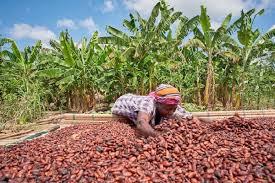
Côte d’Ivoire, the world’s largest cocoa producer, has warned it may take measures to increase cocoa prices if the United States implements recently announced tariffs, Agriculture Minister Kobenan Kouassi Adjoumani told reporters in Abidjan on Thursday.
The Trump administration last week proposed 21% import duties on Ivorian goods—the highest rate among West African nations—as part of a broader tariff strategy targeting dozens of countries. President Trump has since announced a 90-day pause on these tariffs, providing a temporary reprieve while negotiations continue.
“When you tax our product that we export to your country, we will increase the price of cocoa and that will have a repercussion on the price to the consumer,” Kouassi stated, urging Washington to reconsider the proposed measures.
While Côte d’Ivoire cannot directly set global cocoa prices, which are determined by international markets, the country could potentially raise export taxes on cocoa beans, effectively making the commodity more expensive for consumers worldwide.
“It’s the end consumer who will be harmed,” Kouassi emphasized.
The stakes are significant for both countries. According to data from the Coffee and Cocoa Council (CCC), Côte d’Ivoire’s exports between 200,000 and 300,000 metric tons of cocoa to the United States annually, representing a substantial portion of the beans used in America’s chocolate industry.
In what appears to be a strategic response to potential U.S. trade barriers, Kouassi indicated that Côte d’Ivoire would seek stronger ties with the European Union to ensure alternative markets for its cocoa exports.
“If our products are not accepted in the United States, the EU can recover all of them,” he said, suggesting the country is prepared to redirect its valuable commodity to more favorable markets if necessary.
The threatened tariffs come at a sensitive time for global cocoa markets, which are already experiencing record high prices due to crop shortfalls in West Africa, caused by adverse weather conditions and plant diseases.
